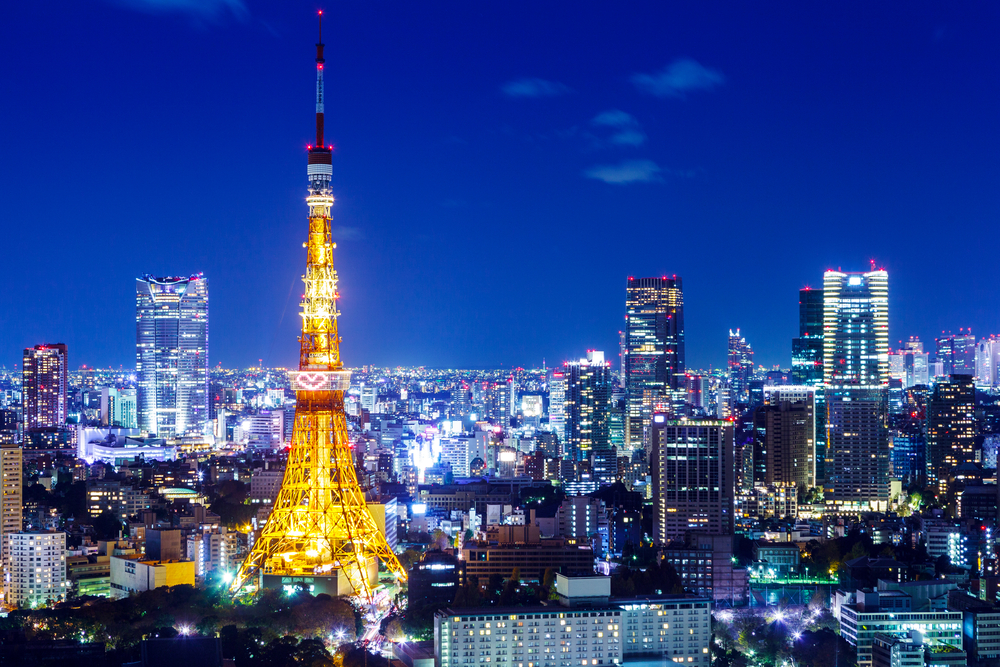Apparently Tokyo’s nightlife isn’t all it is cracked up to be.
While the streets of Shinjuku, Shibuya and Roppongi buzz with activity on a nightly basis, compared to the world’s top global cities, Tokyo is a buzzkill.
Mori Memorial Foundation released the annual Global Power City Index 2019 (GPCI) on November 19 and London, New York, Tokyo and Paris – in that order – were once again named the world’s most comprehensively attractive cities.
While Tokyo ranks high in cultural activities, the city’s nightlife opportunities rank outside the top 10, and well behind the cities it is attempting to overtake in the GCPI ranking.
What is Magnetic?
Since 2008 the GPCI report has ranked 40 or more major cities in terms of “magnetism,” or overall power to attract creative individuals and enterprises from around the world. The 2019 ranking measured 48 cities, with Melbourne (#11) Helsinki (#28), Dublin (#33) and Tel Aviv (#38) being new additions this year.
The index measure six factors, putting the emphasis on strength of economy, cultural interaction and livability. The index also takes into account research and development facilitation, environmental initiatives and accessibility.
The effects of Brexit have yet to be measured.
London continues to dominate the poll at number one in the wake of developments implemented following the 2012 Olympics, however the effects of Brexit have yet to be measured. The fact that several major companies are relocating headquarters from London, including Panasonic, which moved to Amsterdam (ranked number six overall), could affect London’s ranking in the future.
New York continues to show a strong economy, due in part to a lowered corporate tax rate, cementing its spot at number two. The Big Apple’s overall score took a hit as, in a bit of a surprise, the city’s human resource capital has seen a decline, hurting the start-up environment.
Tokyo maintains its ranking as the third most magnetic city in the world, however its score nosedived from last year. At number four, Paris was the city in the top five to see the lowest drop in its score as the City of Light’s reputation recovers from the 2015 terrorist attacks and organizers make improvements toward the 2024 Olympics.
Up until 2018, Tokyo’s score drastically improved every years as its own preparations were made ahead of the 2020 Olympics, overtaking Paris for third place in 2015. However this year Tokyo and Paris are neck-and-neck.
“If Tokyo wants to be close to New York, certain choices need to be made.”
What Can Tokyo Do?
Hiroo Ichikawa, professor emeritus at Meiji University and executive director of The Mori Memorial Foundation, said London’s approach to the 2012 Olympics was successful because they had a concrete strategy in place and followed through, specifically improving barrier-free transportation, hotels and MICE accommodations to the point where London is now the number one destination in the world for conferences and meetings.
Ichikawa says Tokyo lacks the same plan to create a legacy following the 2020 Games, and faces the threat of being overtaken by Paris in next year’s GPCI ranking.
“Tokyo’s weaknesses have to be addressed,” said Ichikawa. “If Tokyo wants to be close to New York, certain choices need to be made.”
Environment continues to be Tokyo’s weakest area as the city ranks 36th in renewable energy rate, though its overall environment score did improve in part to its commitment to climate action (ranked sixth).
Asian cities overall saw a decline in economy, but Japan’s high corporate tax rate is a singular issue, as is its market attractiveness, particularly the lack of a start-up culture – with Tokyo ranking particularly low in “ease of doing business.”
Ichikawa noted that the GPCI scores of smaller American and European cities that have the ability to proactively address climate and transportation issues are on the rise as the larger cities face larger battles in tackling these areas.
Also, four new measurements introduced to the GPCI this year adversely affected Tokyo’s score – with flexibility of workstyle and nightlife options being two of them. Ichikawa noted that regulation of nighttime activities, and the fact that trains stop early and taxi rates are high, dampens Tokyo nightlife opportunities.
During daylight hours, there is no better place to be in the world than Tokyo.
Looking on The Sunny Side
With all that being said, Tokyo’s market size, economic vitality, human capital, research environment and innovation all rank in the top 5 in the world. And during daylight hours, there is no better place to be in the world than Tokyo.
The city’s cultural interactions scores have increased, with visitor amenities topping the GPCI rankings. Tokyo is notably home to the world’s most Michelin-starred restaurants, and consequently scored well in “attractiveness of dining options.”
Tokyo also ranks high in cultural facilities. Groundbreaking institutions are drawing visitors from all over the world, such as the Mori Building Digital Art Museum teamLab Borderless, which has made Odaiba a must-visit destination. The mesmerizing exhibitions became Instagram sensations with foreign visitors in the past year, as did the fascinating “The Soul Trembles” installation by Japanese artist Shiota Chiharu at the Mori Art Museum.
Planning for the Future
GPCI executive committee member Richard Bender, professor and dean emeritus at University of California, Berkeley, says while members of the media watch the numbers in terms of who ranks first, second and so on, educators and city designers use the GPCI results to help develop cities of the future.
We see global cities taking forms we didn’t think possible.
The GPCI is used as a reference model for governmental urban policy development and corporate strategies. The findings were referenced when Japan’s Cabinet drafted last year’s Future Investment Strategy, and when the Tokyo Metropolitan Government devised its action plan for 2020 entitled, New Tokyo, New Tomorrow.
“This information is most valuable research for those of us who plan cities and dream of cities,” says Bender. “We see global cities taking forms we didn’t think possible.”
Feature image: ESB Professional | Shutterstock.com









